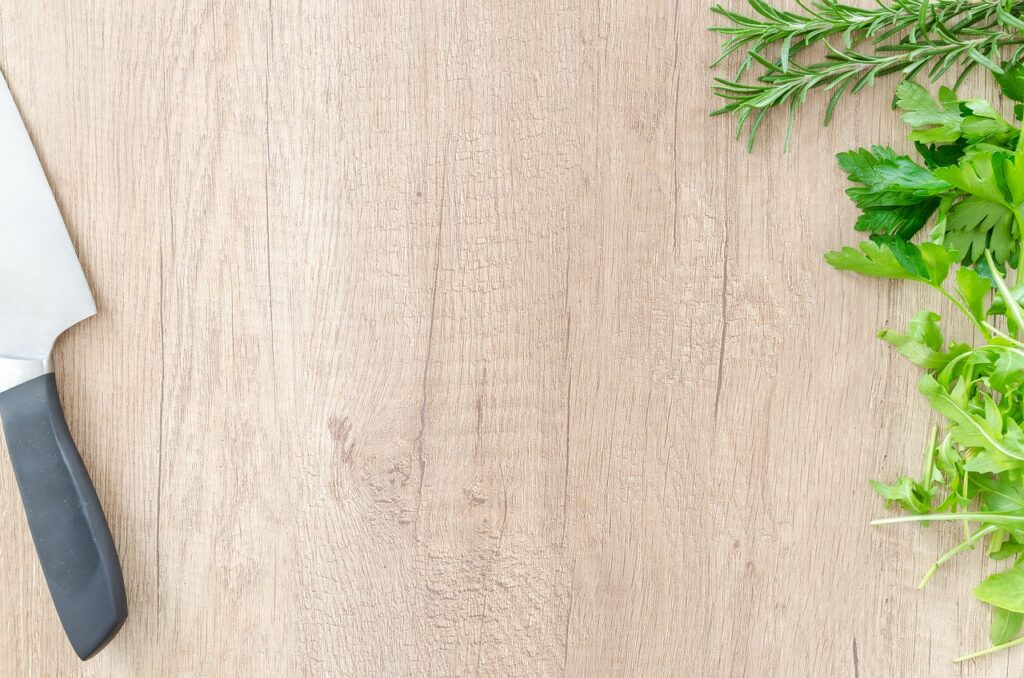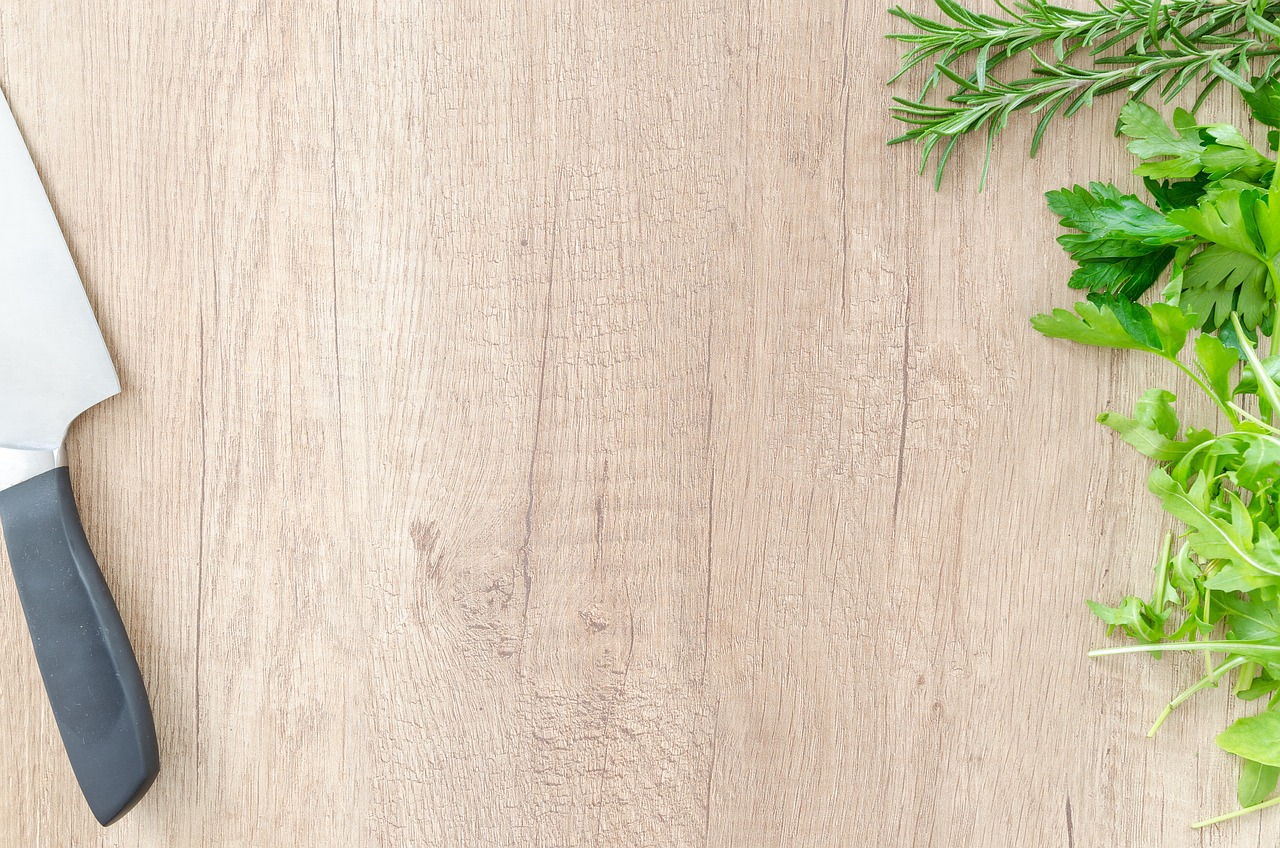Cutting basil is a culinary art form. With the right knife and technique, you can unleash the true flavors of this fragrant herb. In this article, we will explore the different types of knives for basil, factors to consider when choosing a knife, Chiffonade Cut and techniques for cutting basil. We will also provide some best practices for cutting basil safely and efficiently.

Contents
- 1 Understanding the Anatomy of a Knife
- 2 Types of Knives for Basil To Use Chiffonade Cut
- 3 Factors to Consider
- 4 Knife Maintenance and Sharpening
- 5 Techniques for Cutting Basil With Chiffonade Cut
- 6 Best Practices for Cutting Basil
- 7 Best Practices for Cutting Basil And Chiffonade Cut
- 8 Frequently Asked Questions (FAQs)
Understanding the Anatomy of a Knife
A knife is a tool with a sharp blade that is used for cutting, slicing, and chopping. The different parts of a knife include the blade, handle, bolster, and tang.
- Blade: The blade is the part of the knife that does the cutting. It is made from a variety of materials, including stainless steel, carbon steel, and ceramic.
- Handle: The handle is the part of the knife that you hold on to. It is typically made from wood, plastic, or metal.
- Bolster: The bolster is a metal piece that sits between the blade and the handle. It helps to prevent the blade from cutting into your hand.
- Tang: The tang is the metal piece that runs through the handle and into the blade. It provides strength and stability to the knife.
Types of Knives for Basil To Use Chiffonade Cut
There are many different types of knives that can be used for cutting basil. The best type of knife for you will depend on your specific needs and preferences.
- Chef’s knife: A chef’s knife is a versatile knife that can be used for a variety of tasks, including cutting, slicing, and chopping basil. It is a good all-around choice for basil cutting.
- Santoku knife: A santoku knife is a Japanese knife that is similar to a chef’s knife. It is well-suited for precision cuts and delicate basil leaves.
- Paring knife: A paring knife is a small knife that is perfect for intricate basil tasks, such as trimming and creating garnishes.
- Herb scissors: Herb scissors are a unique tool that can be used for cutting basil. They provide a unique way to cut basil into fine strips.
- Mezzaluna: A mezzaluna is a traditional tool for chopping basil. It has a circular blade that is used in a rocking motion.
Factors to Consider
When choosing a knife for basil, there are a few factors to consider, including blade material, blade length, and handle comfort and grip.
- Blade material: The blade material will affect the performance of the knife. Stainless steel is a good choice for general use, while carbon steel is a good choice for professional chefs. Ceramic blades are very sharp, but they can be brittle.
- Blade length: The blade length will affect the type of tasks that you can do with the knife. A longer blade is better for chopping, while a shorter blade is better for slicing and mincing.
- Handle comfort and grip: The handle should be comfortable to hold and should provide a good grip. Wood, plastic, and metal are all good materials for handles.
Knife Maintenance and Sharpening
To keep your knife in good condition, it is important to clean, sharpen, and store it properly.
- Cleaning: Wash your knife with soap and water after each use. Do not put your knife in the dishwasher.
- Sharpening: Sharpen your knife regularly to maintain a sharp edge. You can sharpen your knife with a honing rod, sharpening stone, or professional sharpener.
- Storage: Store your knife in a dry, safe place. A knife block, magnetic strip, or sheath are all good options for storing your knife.
Techniques for Cutting Basil With Chiffonade Cut
There are a few different techniques that you can use for cutting basil. The technique that you choose will depend on the desired outcome.
- Chiffonade: Chiffonade Cut is a technique for cutting basil into thin ribbons. To chiffonade basil, stack several leaves on top of each other and roll them up tightly. Then, use a sharp knife to slice the rolled leaves into thin ribbons.
- Minced: Minced basil is finely chopped basil. To mince basil, use a sharp knife to chop the basil leaves into small pieces.
- Rough chopped: Rough chopped basil is chopped basil with larger pieces. To rough chop basil, use a sharp knife to chop the basil leaves into larger pieces.
Best Practices for Cutting Basil
Here are a few best practices for cutting basil safely and efficiently:
- Use a sharp knife. A sharp knife will make cutting basil easier and safer.
- Use the correct technique. The correct technique will depend on the desired outcome.
- Be careful not to cut yourself. Basil leaves are sharp, so be careful not to cut
Best Practices for Cutting Basil And Chiffonade Cut
- Cut basil immediately before use. Basil will lose its flavor and aroma if it is cut too far in advance.
- Store basil in the refrigerator. Basil can be stored in the refrigerator for up to a week.
- Do not wash basil until you are ready to use it. Washing basil can wilt the leaves.
- Toss basil with a little bit of olive oil before storing. This will help to prevent the leaves from sticking together.
With these tips in mind, you can be sure to cut basil like a pro!
Frequently Asked Questions (FAQs)
Can I use any knife for cutting basil?
No, not all knives are created equal. A sharp chef’s knife is the best choice for cutting basil. A serrated knife or a dull knife will tear the leaves and make them difficult to chop.
How often should I sharpen my knife for basil cutting?
You should sharpen your knife after each use, or at least once a week. A sharp knife will make cutting basil easier and safer.
Are there any specific knives recommended for basil garnishes?
A paring knife is a good choice for basil garnishes. It is small and precise, making it easy to cut basil into small pieces.
Can I use a serrated knife for basil?
You can use serrated knife for cutting basil, but it will not produce the same results as a sharp chef’s knife. Serrated knives are better for cutting bread and tomatoes.
What is the best way to store basil after cutting?
You can store Basil in the refrigerator for up to a week. To store basil, place it in a sealed container with a paper towel to absorb any moisture.
How can I prevent basil leaves from bruising during cutting?
To prevent basil leaves from bruising during cutting, use a sharp knife and a gentle touch. Do not saw through the leaves, and be careful not to crush them.
Are there any safety tips for using knives while cutting basil?
Always use a sharp knife when cutting basil. A dull knife is more likely to slip and cause injury. Always cut away from your body, and be careful not to cut yourself on the basil leaves.
By following these tips, you can safely and efficiently cut basil like a pro!

